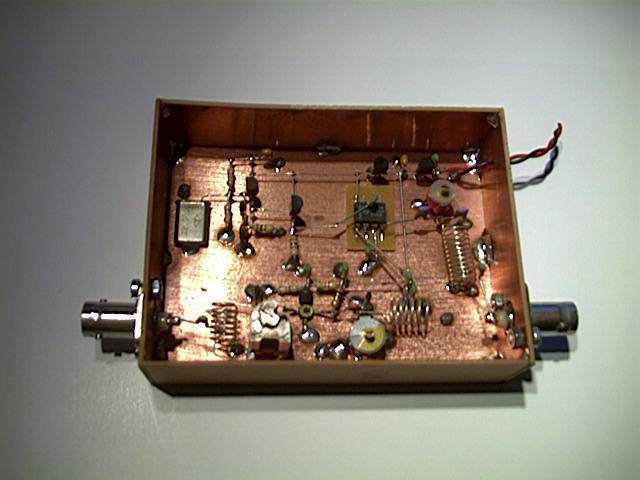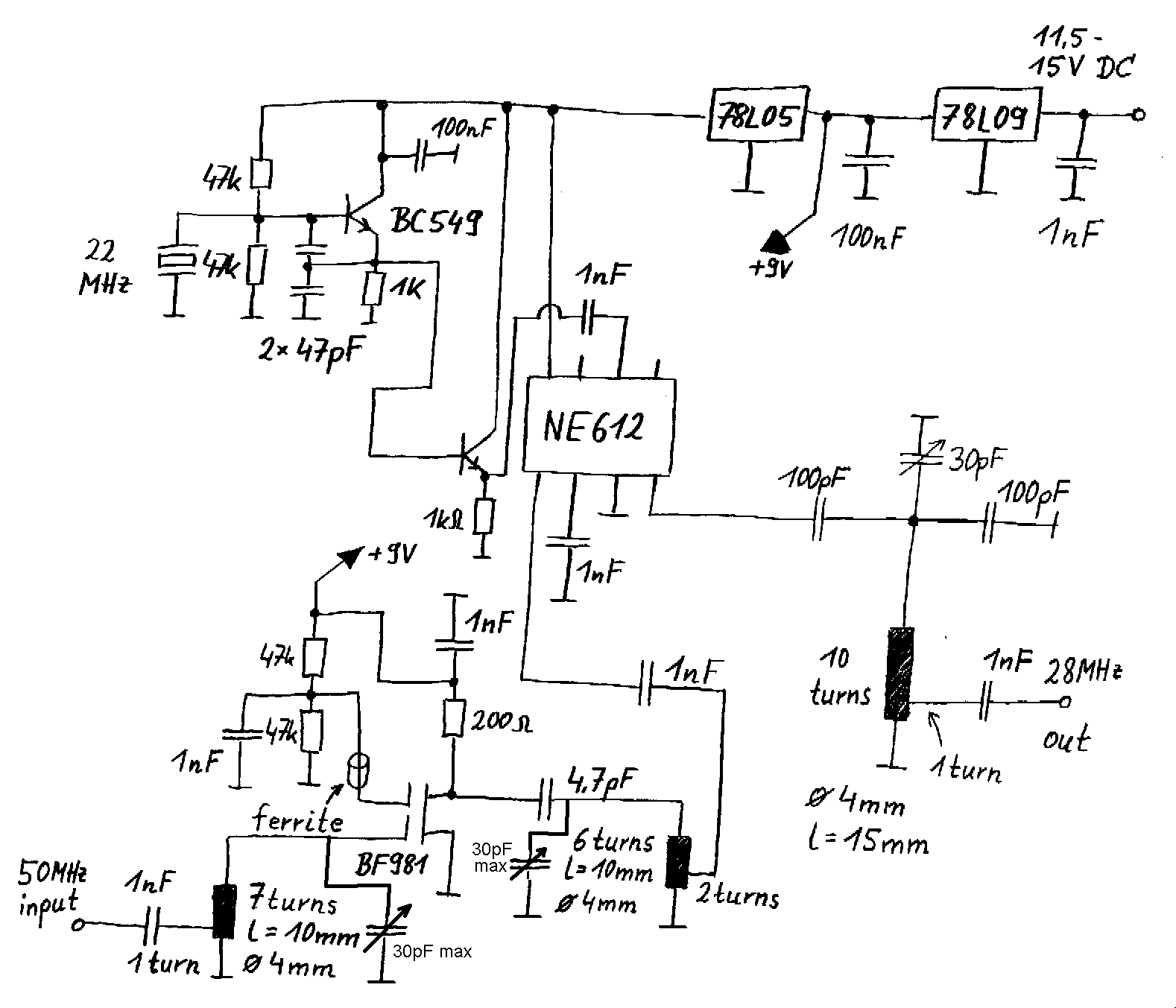 The concept of the RX converter is quite simple and nothing really new. The local oscillator is a standard colpitts crystal oscillator producing the 22MHz LO signal. This signal is fed into the traditional NE612 double balanced mixer from Philips. (The NE602 can also be used without any changes.) In order to have a real good sensitivity the RX signal is preamplified by a dualgate MOSFET preamplifier. I have used a BF960 but a BF981 or similar will also work well. (I suggest to use a ferrite beat on the drain 2 pin in order to avoid problems with RF oscillation of the LNA.) Well thats basically it, the DC input voltage (11.5 to 15 Volts) is regulated twice to have the 9Volts for the LNA and the 5Volts for the Mixer and the local oscillator.
The concept of the RX converter is quite simple and nothing really new. The local oscillator is a standard colpitts crystal oscillator producing the 22MHz LO signal. This signal is fed into the traditional NE612 double balanced mixer from Philips. (The NE602 can also be used without any changes.) In order to have a real good sensitivity the RX signal is preamplified by a dualgate MOSFET preamplifier. I have used a BF960 but a BF981 or similar will also work well. (I suggest to use a ferrite beat on the drain 2 pin in order to avoid problems with RF oscillation of the LNA.) Well thats basically it, the DC input voltage (11.5 to 15 Volts) is regulated twice to have the 9Volts for the LNA and the 5Volts for the Mixer and the local oscillator.
 Calibration is fairly straight forward. Connect the converter to your 28MHz receiver (make sure not to transmit into the converter) and adjust all trimmers for maximum noise level. If you have a 50MHz signal available that you can use for calibration than its even easier, simply adjust all trimmers for maximum signal strength.
Calibration is fairly straight forward. Connect the converter to your 28MHz receiver (make sure not to transmit into the converter) and adjust all trimmers for maximum noise level. If you have a 50MHz signal available that you can use for calibration than its even easier, simply adjust all trimmers for maximum signal strength.
If you should not find a resonance it may be necessary to add or remove a turn of the coil. But normally this should not be necessary.
One thing: There are two high-Q resonance filters to make sure that the image frequency and signals on 28 MHz are well suppressed. However if you have very strong signals on 28MHz or on 6MHz (the 49m radio broadcast band) then you may hear this signals on 28MHz after the converter. So note that if you hear something it is not necessarily your first 50MHz signal!